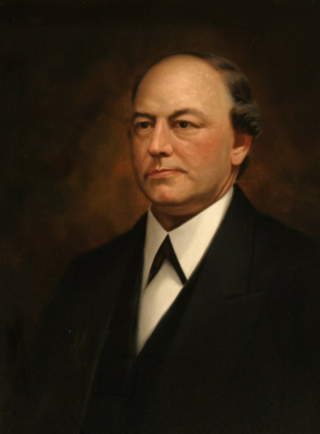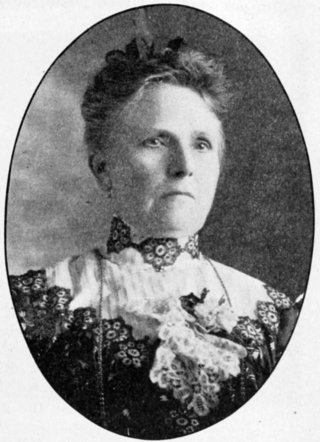Related Research Articles

The Oregonian is a daily newspaper based in Portland, Oregon, United States, owned by Advance Publications. It is the oldest continuously published newspaper on the U.S. West Coast, founded as a weekly by Thomas J. Dryer on December 4, 1850, and published daily since 1861. It is the largest newspaper in Oregon and the second largest in the Pacific Northwest by circulation. It is one of the few newspapers with a statewide focus in the United States. The Sunday edition is published under the title The Sunday Oregonian. The regular edition was published under the title The Morning Oregonian from 1861 until 1937.

The Oregon Journal was Portland, Oregon's daily afternoon newspaper from 1902 to 1982. The Journal was founded in Portland by C. S. "Sam" Jackson, publisher of Pendleton, Oregon's East Oregonian newspaper, after a group of Portlanders convinced Jackson to help in the reorganization of the Portland Evening Journal. The firm owned several radio stations in the Portland area. In 1961, the Journal was purchased by S.I. Newhouse and Advance Publications, owners also of The Oregonian, the city's morning newspaper.

Harvey Whitefield Scott (1838–1910) was an American pioneer who traveled to Oregon in 1852. Scott was a long-time editorialist, and eventual part owner of The Oregonian newspaper. Scott was regarded by his contemporaries as instrumental in bringing the state of Oregon firmly into the political camp of the Republican Party.

The Boston Evening Transcript was a daily afternoon newspaper in Boston, Massachusetts, published for over a century from July 24, 1830, to April 30, 1941.

Henry Lewis Pittock was an English-born American pioneer, publisher, newspaper editor, and wood and paper magnate. He was active in Republican politics and Portland, Oregon civic affairs, and was a Freemason and an avid outdoorsman. He is frequently referred to as the founder of The Oregonian, although it was an existing weekly before he reestablished it as the state's preeminent daily newspaper.

The Oregon Central Rail Road was the name of two railroad companies in the U.S. state of Oregon, each of which claimed federal land grants that had been assigned to the state in 1866 to assist in building a line from Portland south into California. The "East Side Company" of Salem, supported by businessman Ben Holladay, eventually received the grant for its line east of the Willamette River, and was reorganized in 1870 as the Oregon and California Railroad (O&C), which completed the line in 1887. Portland supported the competing "West Side Company", which only built to McMinnville, and was sold to the O&C in 1880. The O&C was later acquired by the Southern Pacific Company, and mostly remains as part of the Union Pacific Railroad's I-5 Corridor; the West Side line is now operated by the Portland and Western Railroad between Beaverton and Forest Grove.
The Oregon Herald was a newspaper published in Portland, Oregon, United States from 1866 until 1873. It was originally a weekly newspaper, and thus was alternatively known as the Weekly Oregon Herald. However, in 1869 the publication became daily except on Mondays, after which it was alternatively known as the Daily Oregon Herald.

Stephen James McCormick (1828–1891) was a prominent printer and publisher in Oregon, United States, who served as mayor of Portland, Oregon, from 1859–1860. He was originally from Dublin, Ireland.

Joseph P. Gaston was an American railroad executive, journalist, and historian based in Oregon. He is remembered as the namesake of Gaston, Oregon, the Joseph Gaston House, and the Gaston-Strong House. Gaston was the first president of the Oregon Central Railroad and an outspoken opponent of railroad executive Ben Holladay. He authored the three-volume Portland, Oregon, Its History and Builders and the four-volume The Centennial History of Oregon, 1811 to 1911.

Emma Hayward commonly called the Hayward, was a steamboat that served in the Pacific Northwest. This vessel was once one of the finest and fastest steamboats on the Columbia River and Puget Sound. As newer vessels came into service, Emma Hayward was relegated to secondary roles, and, by 1891, was converted into a Columbia river tow boat.

Shoo Fly was a sternwheel-driven steamboat that operated on the Willamette and Columbia rivers in the 1870s. Originally built as primarily as a freight boat, the vessel was used in other roles, including towing and clearing of snags. Shoo Fly inspired the name of another sternwheeler on the Willamette River, Don't Bother Me.

Alice was a stern-wheel driven steamboat that operated on the Willamette and Columbia rivers in the 1870s and 1880s. Alice was the largest vessel built above Willamette Falls and was considered in its day to be the "Queen of the River". This steamer was rebuilt after near-destruction in a fire at Oregon City, Oregon in May 1873. In 1876, it was withdrawn from the upper Willamette River and transferred to the Columbia River, where it was worked as a towboat moving ocean-going ships to and from Portland and Astoria, Oregon, near the mouth of the Columbia River.

Dayton was a steamboat which operated on the Willamette and Columbia rivers from 1868 to 1881. Dayton operated on the Willamette from 1868 to 1876, mostly upriver from Willamette Falls, including a route on the Yamhill River to Dayton, Oregon, after which the steamer was named. From 1876 to 1881, Dayton was employed on a run from Portland to Monticello, W.T., which was located on the site of what is now Longview, Washington.
Oregon Deutsche Zeitung, launched in 1867, was the first of several German language newspapers published in the U.S. state of Oregon.
The Bee is a newspaper based in Sellwood, a neighborhood of Portland in the U.S. state of Oregon. It was founded as the Sellwood Bee in 1906, and at various times has been known as Bee, the Milwaukee Bee, and the Sellwood-Moreland Bee. It returned to simply the Bee in 1970, and has retained the name since.
The Portland Bee was a Republican newspaper in Portland in the U.S. state of Oregon in the late 19th century. It was launched in November 1875, the same year as the Portland Daily Bulletin disincorporated; like the Bulletin, it had both daily and weekly editions. It initially had two daily editions, and circulated 1,000 free copies.
Journalism in the U.S. state of Oregon had its origins from the American settlers of the Oregon Country in the 1840s. This was decades after explorers like Robert Gray and Lewis and Clark first arrived in the region, several months before the first newspaper was issued in neighboring California, and several years before the United States formally asserted control of the region by establishing the Oregon Territory.

The New Age, later known as the Portland New Age, was the first African American newspaper published in Oregon.

Catherine Amanda Coburn was an American pioneer of the long nineteenth century associated with the Oregon Territory. Entering the workforce after the untimely death of her husband, she became a teacher and school principal and, later, a newspaper editor. A century after her birth, she and her elder sister were described by an Oregon historian as "probably Oregon's two greatest women journalists." Coburn was active in civic life, especially in her later years. Though she did not identify as a "suffragette", she did actively support the cause of women's suffrage, among various charitable and civic causes.
References
- 1 2 Ludington, Flora Belle (1925). . Oregon Historical Quarterly.
- ↑ Gaston, Joseph (1911). . . Vol. 1.
- 1 2 3 4 Turnbull, George S. (1939). . . Binfords & Mort.
- ↑ "Wheat And Its Shipment". Tri-Weekly Astorian. August 23, 1873.
- ↑ "Liberal Republican. [volume] (Dallas, Or.) 1872-1???, January 25, 1873, Image 2". 25 January 1873.
- ↑ "Morning Oregonian. (Portland, Or.) 1861-1937, February 04, 1911, Section Two, Page 3, Image 19 « Historic Oregon Newspapers".
- ↑ "The Hood River glacier. (Hood River, Or.) 1889-1933, January 28, 1904, Image 3 « Historic Oregon Newspapers".
- ↑ "The Portland bulletin. [volume]".
- ↑ "Portland weekly bulletin".